-
 Bitcoin
Bitcoin $107,352.1067
0.28% -
 Ethereum
Ethereum $2,429.3531
-0.90% -
 Tether USDt
Tether USDt $1.0001
-0.02% -
 XRP
XRP $2.1894
4.62% -
 BNB
BNB $646.7968
0.36% -
 Solana
Solana $147.4290
4.03% -
 USDC
USDC $0.9998
-0.02% -
 TRON
TRON $0.2756
1.52% -
 Dogecoin
Dogecoin $0.1630
1.14% -
 Cardano
Cardano $0.5612
1.18% -
 Hyperliquid
Hyperliquid $37.0580
-0.05% -
 Bitcoin Cash
Bitcoin Cash $496.9410
-0.09% -
 Sui
Sui $2.7318
3.19% -
 Chainlink
Chainlink $13.1503
0.58% -
 UNUS SED LEO
UNUS SED LEO $9.0766
0.55% -
 Avalanche
Avalanche $17.7220
1.46% -
 Stellar
Stellar $0.2380
1.52% -
 Toncoin
Toncoin $2.8439
0.38% -
 Shiba Inu
Shiba Inu $0.0...01143
1.84% -
 Litecoin
Litecoin $85.8053
1.47% -
 Hedera
Hedera $0.1483
2.70% -
 Monero
Monero $314.3240
2.12% -
 Bitget Token
Bitget Token $4.6725
0.77% -
 Dai
Dai $1.0000
0.00% -
 Polkadot
Polkadot $3.3555
1.28% -
 Ethena USDe
Ethena USDe $1.0001
0.02% -
 Uniswap
Uniswap $7.0890
2.64% -
 Pi
Pi $0.5355
-3.40% -
 Pepe
Pepe $0.0...09393
1.06% -
 Aave
Aave $256.8136
-1.90%
What is the difference between USDT and USDC?
USDT and USDC, while both dollar-pegged stablecoins, differ significantly in issuer transparency (Tether vs. Circle), reserve composition verification, and regulatory scrutiny, impacting investor confidence and stability.
Mar 06, 2025 at 01:24 pm
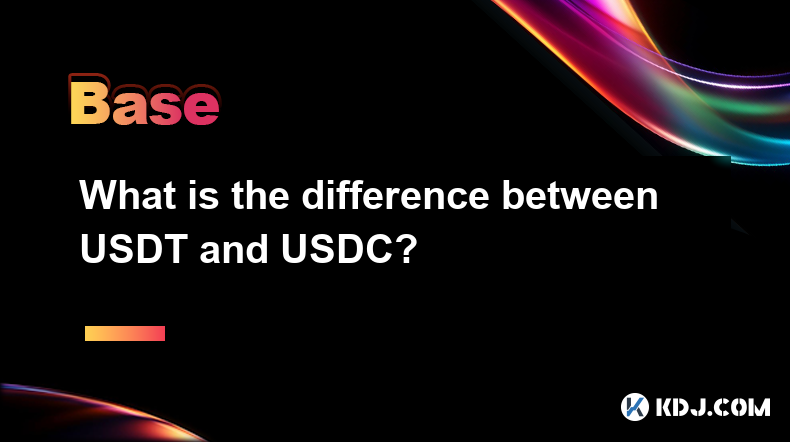
Key Points:
- Issuers: USDT is issued by Tether, while USDC is issued by Circle. This difference in issuer leads to variations in transparency and regulatory scrutiny.
- Reserves: Both claim to be backed by US dollar reserves, but the composition and verification methods differ significantly, impacting trust and stability.
- Adoption and Market Cap: While both are leading stablecoins, their market capitalization and usage across exchanges and decentralized applications vary, influencing liquidity and transaction fees.
- Transparency and Audits: The level of transparency regarding reserves and the frequency of audits differ between the two, impacting investor confidence.
- Smart Contract Differences: While both operate on various blockchains, the underlying smart contracts and functionalities may have subtle variations.
What is the difference between USDT and USDC?
USDT (Tether) and USDC (USD Coin) are both prominent stablecoins, pegged to the US dollar, aiming to maintain a 1:1 ratio. However, significant differences exist in their operational structures, regulatory oversight, and overall trustworthiness.
Issuers and Governance:
USDT is issued by Tether Limited, a company that has faced considerable scrutiny regarding the composition of its reserves. USDC, on the other hand, is a joint venture between Circle and Coinbase, offering a more established and transparent governance structure. This difference in governance significantly influences the level of public trust.
Reserve Composition and Audits:
Both USDT and USDC claim to maintain reserves equal to or exceeding their circulating supply. However, the transparency surrounding these reserves differs drastically. Tether has faced criticism for its lack of complete and regularly audited transparency regarding its reserve assets. USDC, while not completely immune to criticism, undergoes more frequent and independent audits, offering greater assurance to users. The specifics of what constitutes their reserves (cash, commercial paper, etc.) also vary.
Adoption and Market Capitalization:
While both are widely adopted, USDT generally boasts a larger market capitalization than USDC. This difference in market size can affect liquidity, trading fees, and the availability of trading pairs on various exchanges. A larger market cap usually means more readily available trading options. However, a smaller market cap doesn't necessarily indicate a less secure or stable coin.
Transparency and Regulatory Scrutiny:
The level of transparency surrounding the operational aspects of both USDT and USDC varies significantly. USDC generally publishes more frequent and detailed reports about its reserves and undergoes more stringent audits, contributing to higher levels of investor confidence. USDT's history of regulatory challenges and controversies has led to concerns among investors. The regulatory landscape for stablecoins is constantly evolving, and both are subject to ongoing scrutiny.
Smart Contracts and Functionality:
Both USDT and USDC exist on various blockchains, including Ethereum, Tron, and Solana. While their core functionality remains similar – maintaining a 1:1 peg with the US dollar – the underlying smart contracts governing their operations might have subtle differences in design and functionality. These subtle differences can impact transaction speeds, fees, and integration with decentralized applications (dApps). Users should carefully research the specific smart contract implementation on each blockchain before using either stablecoin.
How are USDT and USDC pegged to the US dollar?
Both stablecoins aim to maintain a 1:1 peg with the US dollar through various mechanisms. They claim to hold reserves of US dollar-denominated assets, theoretically allowing users to redeem their stablecoins for an equivalent amount in USD. However, the specifics of how this redemption process works, and the level of transparency surrounding the reserves, are key differences between the two.
Step-by-Step Guide: Understanding the Key Differences
Here's a breakdown of the key differences in a step-by-step format:
- Step 1: Examine the Issuer: Consider the reputation and transparency of the issuer. Tether (USDT) has a more controversial history compared to Circle (USDC).
- Step 2: Investigate the Reserve Composition: Look into the types of assets backing the stablecoin. Independent audits are crucial for assessing the trustworthiness of the reserves.
- Step 3: Evaluate Market Capitalization and Liquidity: A larger market cap usually translates to better liquidity and lower transaction fees, but this isn't a guarantee of stability.
- Step 4: Assess Regulatory Compliance: Check for regulatory scrutiny and compliance history. Understanding the legal landscape surrounding each stablecoin is vital.
- Step 5: Analyze Smart Contract Details: Compare the functionalities and security of the smart contracts on different blockchains.
Common Questions and Answers:
Q: Which stablecoin is safer, USDT or USDC?
A: There's no definitive answer. USDC generally enjoys higher trust due to greater transparency and more frequent audits, but neither is entirely risk-free. The inherent risks of stablecoins, including the potential for de-pegging, apply to both.
Q: Can I easily convert USDT to USDC and vice versa?
A: Yes, most major cryptocurrency exchanges offer trading pairs for USDT/USDC, allowing for seamless conversion. However, transaction fees and slippage should be considered.
Q: Are USDT and USDC regulated?
A: The regulatory landscape for stablecoins is evolving. Both USDT and USDC face varying levels of regulatory scrutiny depending on jurisdiction. Regulations are not uniform globally.
Q: What happens if a stablecoin de-pegs from the US dollar?
A: De-pegging means the stablecoin's value deviates significantly from its intended 1:1 peg with the US dollar. This can lead to significant financial losses for holders. The risk of de-pegging is present for both USDT and USDC, although the likelihood is a matter of ongoing debate and assessment.
Q: Are there any alternatives to USDT and USDC?
A: Yes, several other stablecoins exist, each with its own set of characteristics, risks, and advantages. Examples include DAI, BUSD, and others. Researching the specifics of each is crucial before investing.
Disclaimer:info@kdj.com
The information provided is not trading advice. kdj.com does not assume any responsibility for any investments made based on the information provided in this article. Cryptocurrencies are highly volatile and it is highly recommended that you invest with caution after thorough research!
If you believe that the content used on this website infringes your copyright, please contact us immediately (info@kdj.com) and we will delete it promptly.
- Crypto's First Principles: Are Returns Still Rooted in Fairness?
- 2025-06-28 22:30:12
- Kaspa (KAS) Price Prediction 2025: Will It Hit $1?
- 2025-06-28 22:50:12
- A16Z Dumps $COMP on Coinbase: Liquidation or Rebalancing?
- 2025-06-28 22:30:12
- KraneShares, Coinbase, and Digital Assets: A New Era for Institutional Crypto?
- 2025-06-28 23:07:14
- Bitcoin Solaris: Mobile Mining Revolution & Beyond!
- 2025-06-28 22:35:13
- Bitcoin, Post-Dollar, and US Preparation: A New Digital Gold Standard?
- 2025-06-28 22:52:13
Related knowledge
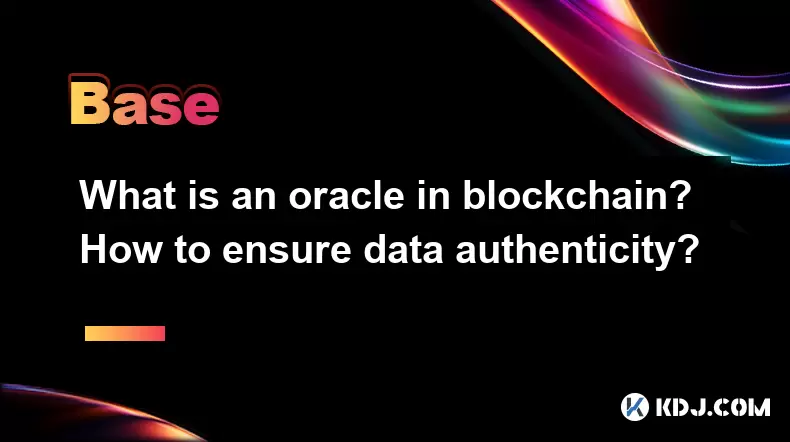
What is an oracle in blockchain? How to ensure data authenticity?
Jun 19,2025 at 08:49pm
Understanding the Role of an Oracle in BlockchainIn the context of blockchain technology, an oracle serves as a bridge between the blockchain and external data sources. While blockchains are inherently secure and decentralized, they cannot access real-world information on their own. Oracles enable smart contracts to interact with off-chain data such as ...
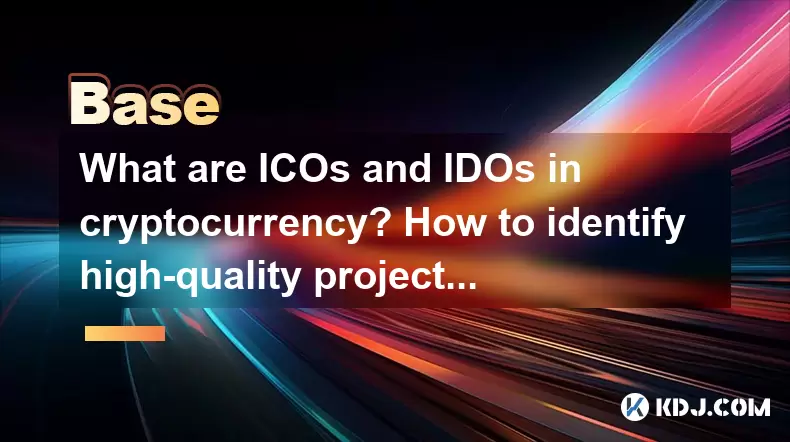
What are ICOs and IDOs in cryptocurrency? How to identify high-quality projects?
Jun 22,2025 at 11:49am
Understanding ICOs in CryptocurrencyInitial Coin Offerings (ICOs) are fundraising mechanisms used by cryptocurrency startups to raise capital for their projects. In an ICO, a company creates and sells its own tokens to investors in exchange for established cryptocurrencies like Bitcoin or Ethereum. The process typically involves the release of a whitepa...
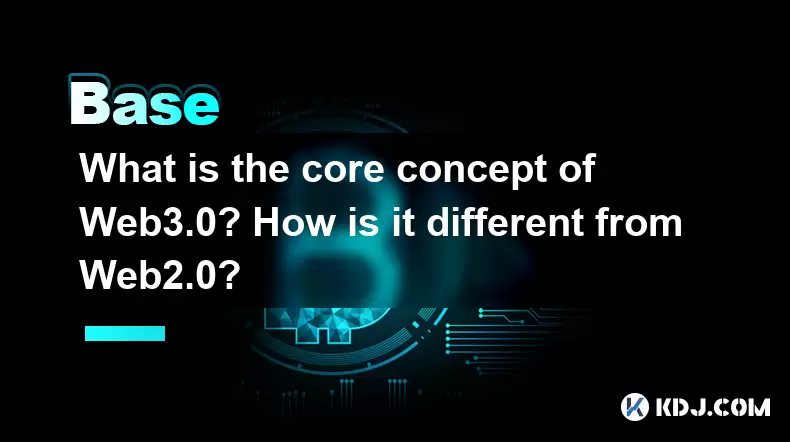
What is the core concept of Web3.0? How is it different from Web2.0?
Jun 21,2025 at 05:56pm
Decentralization as the Foundation of Web3.0The core concept of Web3.0 revolves around decentralization, which fundamentally challenges the centralized architecture of Web2.0. In Web3.0, control and ownership are distributed across a network rather than being held by a central authority or corporation. This is achieved primarily through blockchain techn...
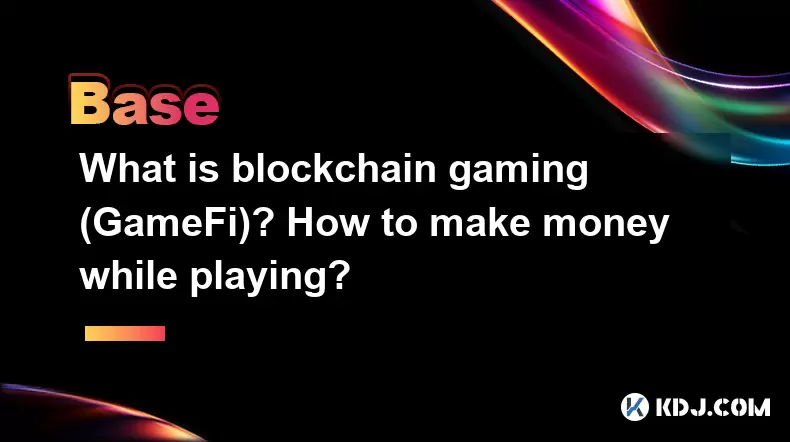
What is blockchain gaming (GameFi)? How to make money while playing?
Jun 20,2025 at 07:56am
Understanding Blockchain Gaming (GameFi)Blockchain gaming, often referred to as GameFi, is a fusion of blockchain technology and video games. It enables players to own in-game assets through non-fungible tokens (NFTs) and earn rewards via cryptocurrencies or token-based systems. Unlike traditional games where items are controlled by centralized develope...
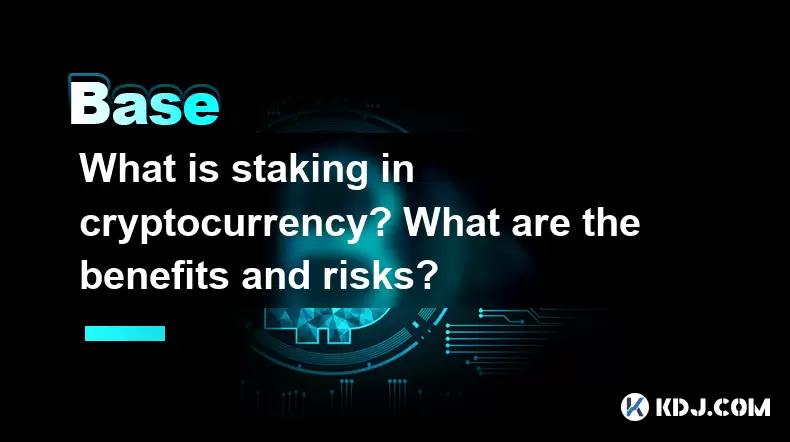
What is staking in cryptocurrency? What are the benefits and risks?
Jun 22,2025 at 10:01am
Understanding the Concept of Staking in CryptocurrencyStaking in cryptocurrency refers to the process of actively participating in transaction validation on a blockchain network that uses a Proof-of-Stake (PoS) consensus mechanism. Instead of miners competing to solve complex mathematical puzzles as in Proof-of-Work systems like Bitcoin, PoS blockchains...
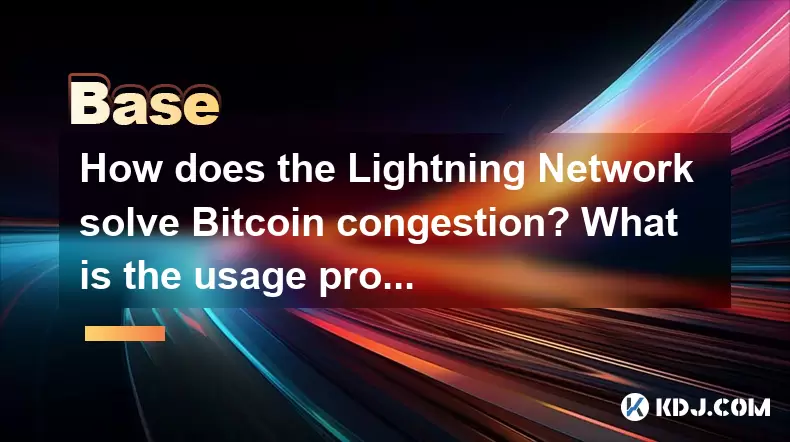
How does the Lightning Network solve Bitcoin congestion? What is the usage process?
Jun 23,2025 at 06:21pm
Understanding Bitcoin Network CongestionBitcoin, as a decentralized digital currency, operates on a blockchain that records every transaction in a public ledger. Each block has a limited size, typically 1 megabyte, which allows for only a certain number of transactions per second (TPS). When the number of transactions increases, the network becomes cong...

What is an oracle in blockchain? How to ensure data authenticity?
Jun 19,2025 at 08:49pm
Understanding the Role of an Oracle in BlockchainIn the context of blockchain technology, an oracle serves as a bridge between the blockchain and external data sources. While blockchains are inherently secure and decentralized, they cannot access real-world information on their own. Oracles enable smart contracts to interact with off-chain data such as ...

What are ICOs and IDOs in cryptocurrency? How to identify high-quality projects?
Jun 22,2025 at 11:49am
Understanding ICOs in CryptocurrencyInitial Coin Offerings (ICOs) are fundraising mechanisms used by cryptocurrency startups to raise capital for their projects. In an ICO, a company creates and sells its own tokens to investors in exchange for established cryptocurrencies like Bitcoin or Ethereum. The process typically involves the release of a whitepa...

What is the core concept of Web3.0? How is it different from Web2.0?
Jun 21,2025 at 05:56pm
Decentralization as the Foundation of Web3.0The core concept of Web3.0 revolves around decentralization, which fundamentally challenges the centralized architecture of Web2.0. In Web3.0, control and ownership are distributed across a network rather than being held by a central authority or corporation. This is achieved primarily through blockchain techn...

What is blockchain gaming (GameFi)? How to make money while playing?
Jun 20,2025 at 07:56am
Understanding Blockchain Gaming (GameFi)Blockchain gaming, often referred to as GameFi, is a fusion of blockchain technology and video games. It enables players to own in-game assets through non-fungible tokens (NFTs) and earn rewards via cryptocurrencies or token-based systems. Unlike traditional games where items are controlled by centralized develope...

What is staking in cryptocurrency? What are the benefits and risks?
Jun 22,2025 at 10:01am
Understanding the Concept of Staking in CryptocurrencyStaking in cryptocurrency refers to the process of actively participating in transaction validation on a blockchain network that uses a Proof-of-Stake (PoS) consensus mechanism. Instead of miners competing to solve complex mathematical puzzles as in Proof-of-Work systems like Bitcoin, PoS blockchains...

How does the Lightning Network solve Bitcoin congestion? What is the usage process?
Jun 23,2025 at 06:21pm
Understanding Bitcoin Network CongestionBitcoin, as a decentralized digital currency, operates on a blockchain that records every transaction in a public ledger. Each block has a limited size, typically 1 megabyte, which allows for only a certain number of transactions per second (TPS). When the number of transactions increases, the network becomes cong...
See all articles
























































































